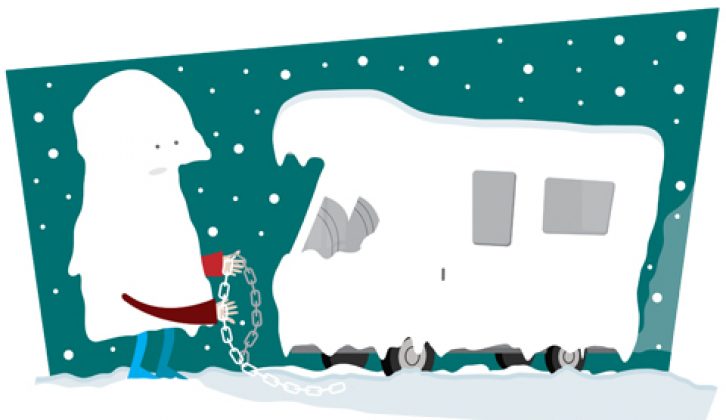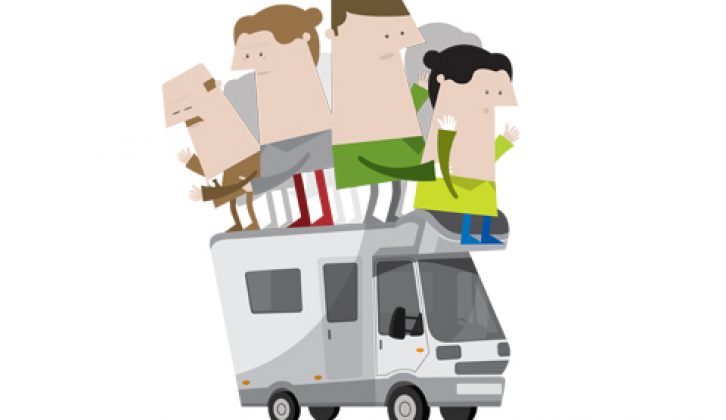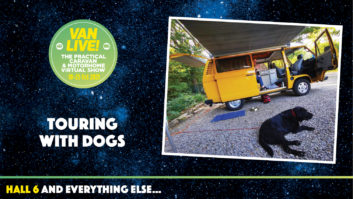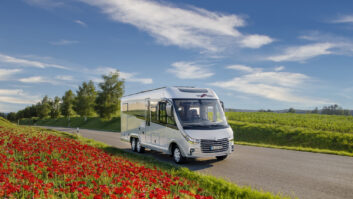In the first instalment of our two-part special feature, we’ve listed 10 things you need to know about motorcaravanning, but were afraid to ask. Whether you’re new to the game or an old hand, these will keep you safe, legal and happy.
- For part two of this feature, just click here.
1. Is my vehicle legal?
Whether it may be new, second-hand, built in the UK or imported, all road vehicles must comply with UK Construction and Use and Lighting Regulations. If your vehicle meets the National Caravan Council (NCC) certification scheme, it will have been inspected to meet all UK and EU rules and will have an NCC approval plate on the vehicle. Tyre pressures must be suitable for the load being carried and your ’van must not when loaded weigh more than the manufacturer’s stated maximum weight or exceed the maximum axle weights. You may have to go to a public weighbridge to verify this (ask your council where your nearest one is).
2. Where can I pitch up on tour?
In general, you’re not allowed to ‘wild camp’ in the UK – that is, pull up wherever you like and stay the night. Local bye-laws restrict staying overnight in many car parks and in lay-bys, and you’re likely to be moved on if your stay looks like anything other than a rest stop. Many town centre car parks have height barriers, so you may have to find lorry parks or roadside spaces. Go to www.motorhomeparking.co.uk for some great advice on this issue. In permitted Pay and Display locations, you’ll probably have to pay for two spaces, so check the notices.
3. How fast can I go?
This depends on which kind of road you are driving on and may be different for larger motorhomes. However, most conventional motorhomes are treated as cars for the purpose of speed limits and motorway regulations – that means 70mph on a motorway or dual carriageway and 60mph on other roads unless a signed lower limit applies. Larger motorhomes, though, with an unladen weight of more than 3050kg are restricted to 60mph on dual carriageways other than motorways and 50mph on single carriageway roads. If you’re towing a trailer, you’re not allowed in the outside lane of a motorway.
4. Where can I park at home?
You can park anywhere within the boundaries of your own property, provided there’s no covenant on the property preventing such use. Be sensitive towards your neighbours – for example, you may create a nuisance to them if your ’van is preventing light reaching part of their house. You may park outside your house on the road if there are no parking restrictions, but you have no more right to this space than any other road user. On the road at night, you must park facing the direction of traffic and you must use parking lights if you park on a road or in a lay-by with a speed limit of over 30mph.
5. Will the campsite accept me?
It’s always wise to let a campsite know in advance that you intend to come in a motorhome, because some sites reserve specific areas for these vehicles. If your vehicle is very large, some sites may have only limited space for a big RV and may refuse to accept you at all. However, most sites do their best to accommodate you, although you may not get much choice of pitch location. In Europe, some sites have far less space between pitches than we are used to here and you may find that local rules prevent you using that site.
6. Will I need to fit chains in the winter?[tl:gallery index=1 size=215×129]
In some European countries, you must fit chains or studded tyres on designated routes in winter. Road signs indicate this, but check your route with a motoring organisation or one of the two big Clubs before you go. If you don’t have the correct kit, you’ll be fined and turned back. No such rules exist here, but if you’re touring in Scotland in winter, it might be a useful precaution. Chains must fit your tyre size and have enough bodywork clearance.
7. Are there special rules for pitches?
This depends on the site, but generally you will be pitched where you do not interfere with others. If the site allows you to choose your pitch yourself on arrival, be aware of other users’ feelings and try not to block their view. There is a minimum separation between vehicles in UK, usually six metres, which is intended to prevent fire spreading. Most sites will have pitches that are particularly suitable for motorhomes and may direct you to park there and nowhere else, particularly if the ground is wet. You may also be asked to approach from a specific direction to avoid damaging grass or edgings.
8. What rights do I have against the seller?
A vehicle bought from a dealer has the benefit of a wide range of consumer legislation, including the Sale of Goods Act, which contains a key phrase ‘fitness for purpose’. However, a private sale has limited protection – the vehicle must simply be ‘as described’. It is illegal to sell an unroadworthy vehicle, but you should still examine its condition before purchase. Buy only from the seller’s home address and in daylight. There are reports of stolen ’vans being used to create false motorcaravan histories as ‘clones’ and then bought by unsuspecting buyers. Get an independent inspection and vehicle history check, and never, ever, pay in cash.
9. How many people can I carry? What about seat belts?[tl:gallery index=2 size=215×129]
You can legally carry as many people as you wish in the rear compartment, but you could be personally liable for their safety if they are not in a suitable seat with a seatbelt. Otherwise, you could be charged with having an ‘insecure load’. Most good motorhome makers will have designated how many travelling seats there are, and provided them with proper, tested seatbelts. If there is a seatbelt available, it must be used. It is against the law to carry a small child without a suitable restraint appropriate to their age and height. A very few motorhomes have side-facing seats with belts – these are not generally thought to be safe in the event of a crash and should not be counted as travelling seats.
10. What rules govern driving abroad?
Check before you travel, because motoring rules vary considerably from country to country, particularly on speed limits for motorhomes and access to town centres. The clubs, the AA and the RAC all give useful information on this.
Towing a car on a rigid A-frame is often penalised. Always carry your licence to show your permission to drive the class of vehicle you are in. You may have to pay on-the-spot fines if you infringe any local rules. In serious cases, you may even have your licence confiscated. Speed camera fines, parking or toll system fees (e.g. Ireland) may well follow you home via debt-collection agencies.
There are lots of other rules, too – again, contact the Clubs for advice. They’ll provide you with factsheets detailing all the driving laws of the countries you intend to visit.













